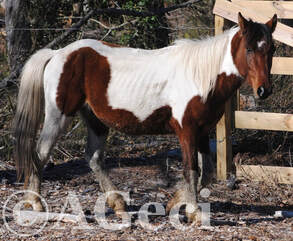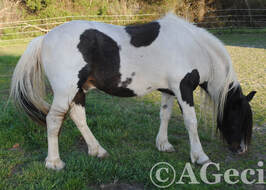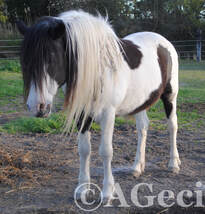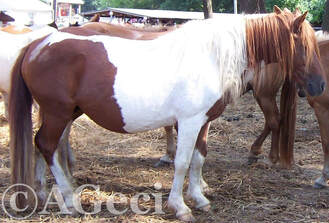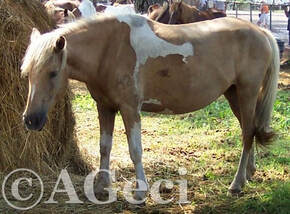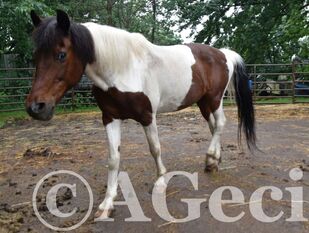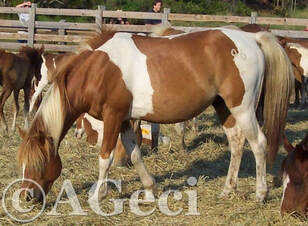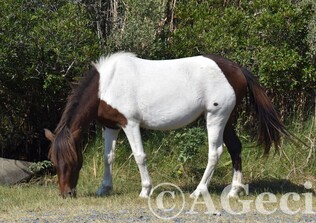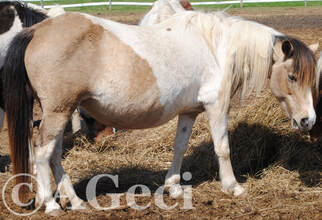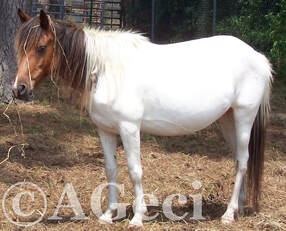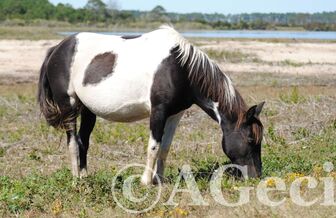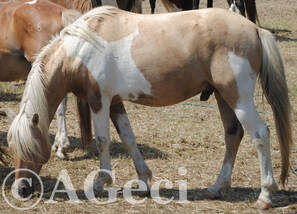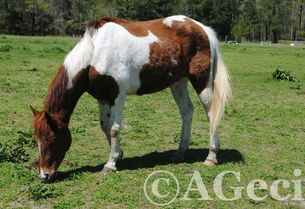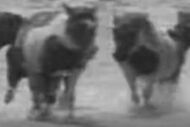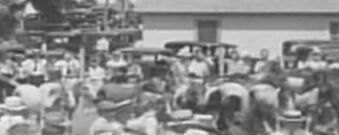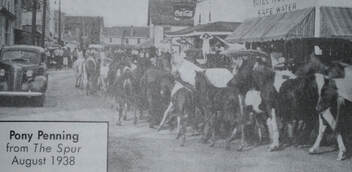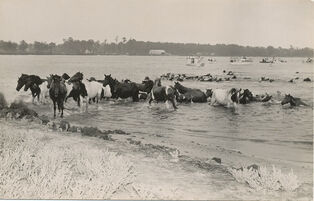Tobiano (TO) is the most well-known of the Chincoteague pinto patterns and is the pinto most identified with the Chincoteague Pony. It's the most common pinto pattern in Chincoteague Ponies and is in both the Virginia and Maryland feral herds.
Tobianos will have white on all four legs, three rarely. Tobianos will usually have solid heads with normal markings like a star or a stripe. White is generally on the shoulders and hips. Body spots will usually have edges that are rounded and well defined. Tobianos often have manes and tails with multiple colors. Chestnut tobianos with white tails often have dark tail tips that look black. Tobiano can be extremely minimal and extremely maximum. Minimal tobianos have reduced white markings and cryptic tobianos will have little or no body spotting, but will still have white on their legs. Maximum will still generally have dark heads. Tobianos have dark skin and eyes. They have striped hooves.
Tobianos will have white on all four legs, three rarely. Tobianos will usually have solid heads with normal markings like a star or a stripe. White is generally on the shoulders and hips. Body spots will usually have edges that are rounded and well defined. Tobianos often have manes and tails with multiple colors. Chestnut tobianos with white tails often have dark tail tips that look black. Tobiano can be extremely minimal and extremely maximum. Minimal tobianos have reduced white markings and cryptic tobianos will have little or no body spotting, but will still have white on their legs. Maximum will still generally have dark heads. Tobianos have dark skin and eyes. They have striped hooves.
Cat tracks and roaning are commonly found on tobianos. They are not a separate inheritance but a characteristic of the tobiano pinto pattern. Both are more common on homozygous tobianos but can also be found on heterozygous tobianos.
Tobiano is dominant, That means a tobiano must have a tobiano parent. A genetic test for tobiano is available and many Chincoteagues have been tested for it. Tobiano is located on the KIT gene.
Tobaino is reported from multiple sources to have been introduced through Shetland Pony outcrossing, Once Upon an Island by Kirk Mariner states that Clarence Beebe was the one do so. Clarence Beebe was advertising "spotted" ponies for sale in 1920. Ronald Keiper stated in his book The Assateague Ponies that pinto was introduced in the 1920's. There are some indications that it may have been earlier. Edwards Timmons and John Hill purchased a group of "Mexican ponies" from Nevada in 1890 and some may have been tobiano. A Chronicle of the Horse article stated that Timmons brought a "spotted stud" from out west prior to 1900. Timmons started breeding Shetland Ponies in 1909 and it was reported that some of his Shetlands were bred into the wild ponies on Assateague. A Delmarva Star article describing the 1930 Pony Penning described the ponies as "many colored, with blacks, browns, bright bays, and so many with spotted coats."
|
Black tobiano. Tested homozygous for tobiano.
Chesapeake Powhattan's Promise (Witch Doctor x Promise of Summer) Pedigree |
|
Bay tobiano. Heterozygous as sire is a solid bay. Maryland Assateague Horse.
Seaseas Bay Breeze (Delegate's Pride x Susi Solé) Pedigree |

